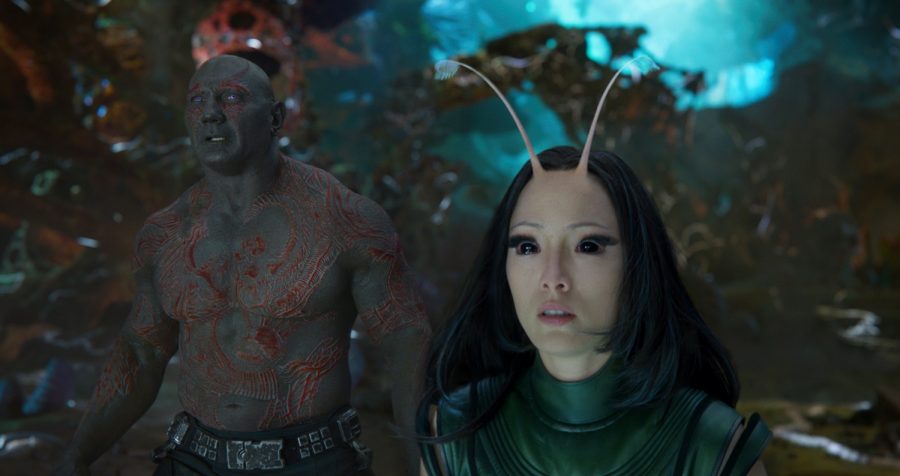Where Is My Goth Asian Girlfriend?
MARVEL STUDIOS VIA FLICKR
Mantis (Pom Klementieff) from “Guardians of the Galaxy Vol. 2” is an example of stereotypes in films featuring Asian women.
March 11, 2019
In Hollywood, Asians have been stereotyped and underrepresented until all too recently. Asian roles were rarely assigned and when they were, the characters were often one-dimensional and not even played by Asians. Docile O-Lan (Luise Rainer) in “The Good Earth,” the “dragon lady” O-ren Ishii (Lucy Liu) from “Kill Bill” and pervy Mr. Yunioshi (Mickey Rooney) in “Breakfast at Tiffany’s” were all characters that familiarized audiences with Asian stereotypes. Though Hollywood has taken strides to become more inclusive of Asians, a new image has cast all those intentions into doubt.
Enter the goth Asian girl. With dyed hair, piercings, dark clothing and a “cool” nature, she is a far-too-common evolution of the “manic pixie dream girl.” Characters that fit this trope such as Mako Mori from “Pacific Rim,” Blink from “X-Men” and Knives Chao from “Scott Pilgrim” need to be removed from screens.
In the traditional stereotype, Asian women were depicted as obedient, reserved and often nerdy. They were often background characters with little to no depth. The “china doll” or “lotus flower” describe the silent, submissive images in movies as recent as “Guardians of the Galaxy 2,” where the character of Mantis (Pom Klementieff) raised more than a few eyebrows from viewers. She was obedient, meek and only followed orders from Ego (Kurt Russell).
In contrast, the “goth Asian girl,” seen in “Glee” with Tina Cohen Chang, GoGo Tamago in “Big Hero 6” and most recently Yukio in “Deadpool 2,” represents an equally problematic perception. In the Marvel sequel, the character Yukio is introduced as Negasonic Teenage Warhead’s girlfriend. She has dyed hair, edgy clothing and a cute, renegade personality to boot.
While the movie relished in its 83 percent Rotten Tomatoes score and its fans raved about an LGBTQ couple in a superhero film, audiences couldn’t ignore the simplified character of Yukio. According to research done in 2016 by the USC Annenberg School of Communications and Journalism, only one out of 20 speaking roles go to Asians and only 3.5 percent of any roles in film go to Asians. This underrepresentation as well as misrepresentation is angering the Asian community. One Twitter user said, “the fact that Asian girls in media can’t be rebellious/different without a streak of (purple) color in their hair pisses me off to no end.”
Critics on social media have opened up about fearing the fetishization of Asians. The “exotic” nature of Asian girls is pleasurable to men because they are “different.” The popularization of stereotypes like the “goth rebel girl” have affected girls who fit this category, making them objects of sexualization. With the rise of Korean pop and Korean movies, both Asian girls and guys are becoming fetishized. Speaking as an Asian woman, we are not a bucket list goal or a part of a weird fantasy, but people with depth and personality.
Diversity doesn’t end with casting a popular stereotype. Asian girls should feel free to get a streak in their hair or dress in dark colors, but those stylistic elements alone don’t make a multi-dimensional character. We need positive influences of Asian representation in Hollywood with movies such as “Crazy Rich Asians.” This was a big step in the direction of changing stereotypes and creating a movie with an all-Asian cast. Asians aren’t “exotic” or “foreign” sexualized objects, but just people.
The popularization of stereotypes, the objectification and the racism need to end. It’s time to change the perception of Asians in entertainment. Mainstream media needs to give Asians a chance in the limelight. Going forward, I hope to see more positive representation and inclusion of Asian Americans by giving them roles that deal with more complex human experiences. We are powerful and most importantly, we can do anything.










